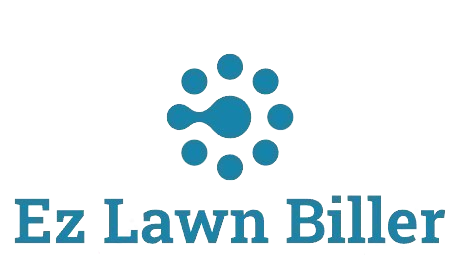Avoiding Common Schedule Management Mistakes: Secrets to Streamlined Efficiency and Success
Managing schedules effectively is crucial in any business, yet many overlook key practices that lead to confusion and inefficiencies. In this blog post, we will explore common scheduling mistakes, solutions to avoid them, and how tools like lawn billing software can enhance your scheduling efficiency.
Avoid These Common Manage Schedules Mistakes
In today’s fast-paced world, effective schedule management is more important than ever. For businesses, particularly in the lawn care industry, streamlined scheduling can make the difference between success and failure. Despite its significance, many companies fall into common pitfalls that hinder their operational efficiency. This article will delve into these scheduling mistakes, provide actionable solutions, and highlight how leveraging advanced tools like lawn service software can streamline your operations.
Let’s face it, regardless of the size of your business, managing schedules can be a daunting task. Miscommunication, last-minute changes, and lack of organization can lead to chaos, lost revenue, and unhappy customers. Thus, understanding what errors to avoid is vital for any business owner. In this post, we will break down the most common mistakes made in schedule management, the repercussions of these mistakes, and how you can transform your approach for better results.
Miscommunication and Lack of Clarity
One of the most prevalent mistakes in schedule management is miscommunication. Whether it’s between team members or with clients, unclear messages often lead to conflicts and missed appointments. Studies indicate that around 70% of workplace failures stem from poor communication. To avoid this, it’s essential to establish clear communication channels within your team.
Utilizing tools like a lawn company app can help ensure everyone stays on the same page. This software allows for real-time updates, ensuring that all team members have access to the same information. For instance, if a client requests a change in their service schedule, being able to notify the entire team instantly can prevent confusion and enhance customer satisfaction.
Additionally, setting expectations upfront can mitigate potential misunderstandings. Clearly outline roles regarding schedule management, and ensure that each team member understands their responsibilities. A simple checklist or a project management tool can serve as a great resource for maintaining clarity and accountability.
Neglecting Regular Updates
Another common mistake is failing to regularly update schedules. Change is inevitable in any business, and neglecting to adjust schedules accordingly can lead to significant setbacks. For example, if a technician is called in for an emergency job but their schedule isn’t updated, this could lead to double bookings and frustrated clients.
To counteract this issue, consider implementing a recurring review system for your schedules. Regularly evaluate your upcoming weeks or months to spot potential conflicts. This practice not only keeps everyone informed but also allows you to proactively manage changes. Utilizing a comprehensive service company software can also automate these updates, ensuring all stakeholders are informed in real time.
For maintaining momentum, it’s also advisable to set reminders for upcoming tasks and appointments. Digital calendars can sync across devices, allowing everyone on your team to stay aware of changes no matter where they are.
Overlooking the Importance of Time Management
Effective schedule management is not just about filling in the slots. Time management plays a crucial role, and overlooking this can lead to rushed jobs and decreased service quality. Research has shown that employees who manage their time well are 25% more productive. Therefore, ensuring that each task on the schedule has an appropriate amount of time allocated is essential.
Utilizing a lawn service computer program can help in analyzing how long various tasks take and help in setting realistic timeframes for future assignments. By tracking performance and adjusting schedules based on data, you can create a more accurate and efficient workflow.
Moreover, training your staff on effective time management techniques can yield significant benefits. Encourage them to prioritize tasks based on urgency and importance, and provide them with tools that facilitate better time management practices. This can lead not only to improved productivity but also to enhanced job satisfaction.
Inadequate Use of Technology
In today’s digital age, resisting technology can be a critical mistake. Many businesses still rely on outdated methods for schedule management, such as paper calendars or spreadsheets. These practices can lead to inefficiency and error. In contrast, adopting modern lawn service software can dramatically improve scheduling capabilities.
With features like automated reminders, real-time updates, and customizable scheduling options, these tools can simplify the scheduling process and reduce human error. Furthermore, solutions like a lawn company computer program can centralize client data, allowing for better service management and streamlined communication.
Investing in technology not only enhances efficiency but also provides a competitive edge. A well-organized schedule can lead to more satisfied customers, higher retention rates, and ultimately, increased revenue.
Ignoring Customer Preferences
Another mistake that many businesses make is disregarding customer preferences when scheduling services. Clients appreciate flexibility and consideration of their unique schedules. By ignoring their preferences, you risk losing valuable clients who feel undervalued.
Utilizing client management features in your lawn billing software can streamline communication and help track customer preferences. This allows for personalized scheduling that enhances client satisfaction. Consider surveying your clients regarding their preferred service times and incorporate this feedback into your scheduling practices.
Moreover, regular follow-ups can help keep your clients engaged and informed about their services. Offering them the option to reschedule or communicate their availability fosters a stronger client-business relationship, enhancing overall loyalty.
Failing to Analyze Scheduling Data
Lastly, one of the most overlooked aspects of scheduling is data analysis. Without analyzing scheduling data, businesses miss out on valuable insights that could inform how to improve their scheduling processes. Tracking metrics such as service times, customer cancellations, and scheduling conflicts can provide a clearer picture of where improvements are needed.
With a robust lawn service app, you can generate reports that highlight these trends and assist in making data-driven decisions. For example, if you notice a pattern of last-minute cancellations on specific days, you might analyze whether those days coincide with common client schedules or external factors.
Implementing a systematic approach to data analysis not only enhances your scheduling but also allows you to continually adapt and evolve your strategy for optimal efficiency. This proactive approach can lead to significant improvements and a stronger competitive position in the market.
Conclusion
In summary, effective schedule management is a critical component of running a successful business. By avoiding common mistakes such as miscommunication, neglecting updates, poor time management, and underutilization of technology, you can significantly enhance your operational efficiency. Remember, every detail matters, and taking the time to refine your scheduling practices can yield substantial benefits.
Implementing tools like EZ Lawn Biller, a dedicated lawn billing software, can streamline your scheduling and billing processes, reducing errors and saving you precious time. As you strive for improvement in your scheduling, focus on understanding your clients’ needs, utilizing data, and embracing technology.
Effective schedule management is an ongoing process. Stay aware of your practices, adapt as necessary, and continuously seek to optimize. The result will be a more organized, efficient, and client-focused business, paving the way for greater success.




